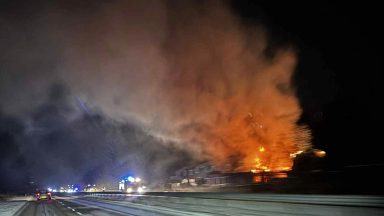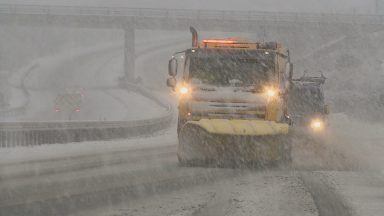The whole of Scotland will witness a partial eclipse on Thursday morning when the Moon passes before the Sun blocking out its disc.
The event, known as an annular eclipse, will leave only a thin ring of sunshine visible in some parts of the world.
Scotland will have the best view in the UK, with the Isle of Lewis and Shetland likely to see the most of the Sun’s disc being blotted out.
Those in Lerwick will see the eclipse start at 10.15am, with maximum coverage reached by 11.27am with about 38% of the Sun appearing to be covered by the Moon, before ending at 12.44pm.
 iStock
iStockFurther South the eclipse will begin slightly earlier and less of the Sun’s disc will be blacked out.
In Prestwick, South Ayrshire, it will begin at 10.05am, reach mid-eclipse at 11.15am, and then end at 12.29pm.
In Glasgow, it will start at 10.07am, be at its max at 11.16am and finish at 12.31pm, with it happening a minute later in Edinburgh.
In Aberdeen, the Moon will begin moving across the Sun’s disc at 10.10am and cover just over 32% of it by 11.21am.
It is not safe to view a solar eclipse with your bare eyes. The Royal Astronomical Society warns that you should never look directly at the Sun and methods such as using old film or smoked glass are also dangerous potentially causing severe damage.
Even the darkest sunglasses are useless, so instead using special eclipse glasses or a pinhole projector is advised.
STV meteorologist Sean Batty said: “Some of you will remember me covering the solar eclipse in 2015, which was the biggest eclipse we had experienced for many years. In Scotland, 80-90% of the sun was covered at maximum eclipse around 9.30am and this caused a significant darkening with street lights coming back on.
“This time round at maximum eclipse around 11.15am there will only be about a third of the sun covered, which shouldn’t make any noticeable difference to our light levels on the ground, so if it’s cloudy where you are you’ll probably not see any change.
“The best places for cloud breaks during the eclipse will be around the north Highlands, Moray, Aberdeenshire, Edinburgh, Lothians and Borders.”
Advice on how to view Thursday’s event safely can be found from the Royal Astronomical Society here.
For information on when you can see the eclipse based on where you are visit timeanddate.com.
 iStock
iStockIt will be four years until the next eclipse, which will also be partially visible in Scotland. After that one in 2025, the next will be in 2036, when we can expect to see 60% of the Sun covered.
Sean said: “If you’re looking for something better than our 2015 and a proper darkening of our skies you’ll have to wait until 2065, and if you’re really patient 2090 will bring us an almost full solar eclipse.”
Follow STV News on WhatsApp
Scan the QR code on your mobile device for all the latest news from around the country


 iStock
iStock

























